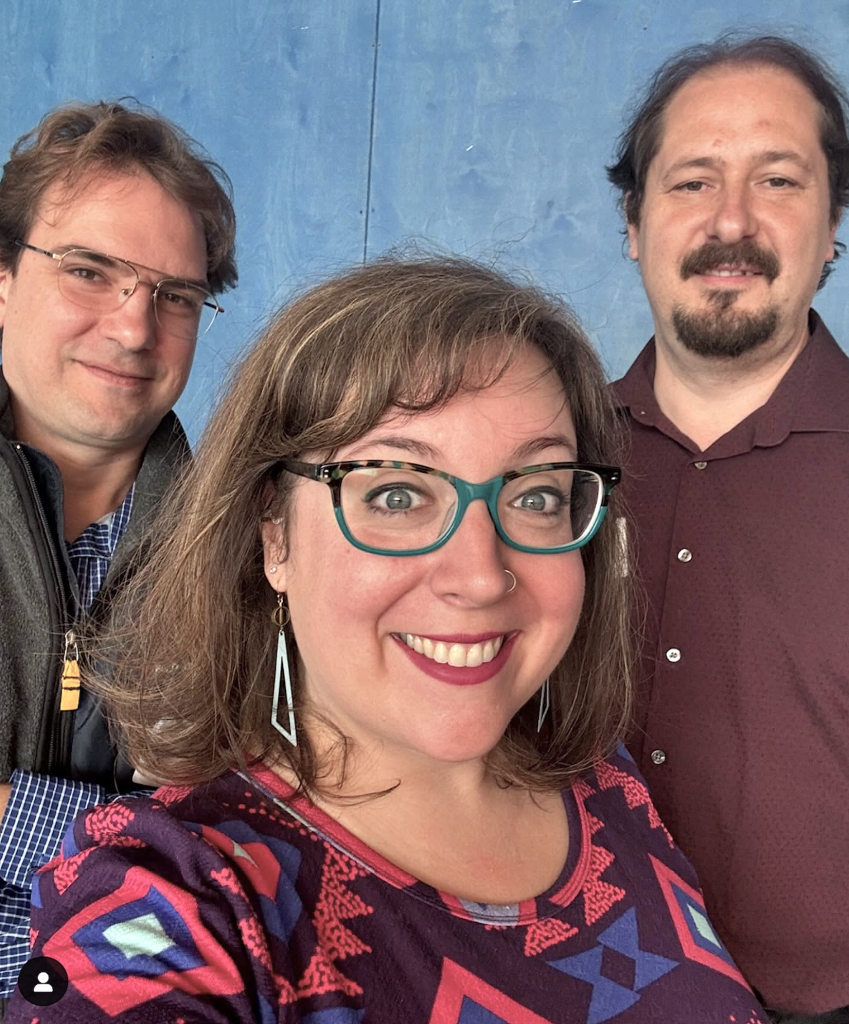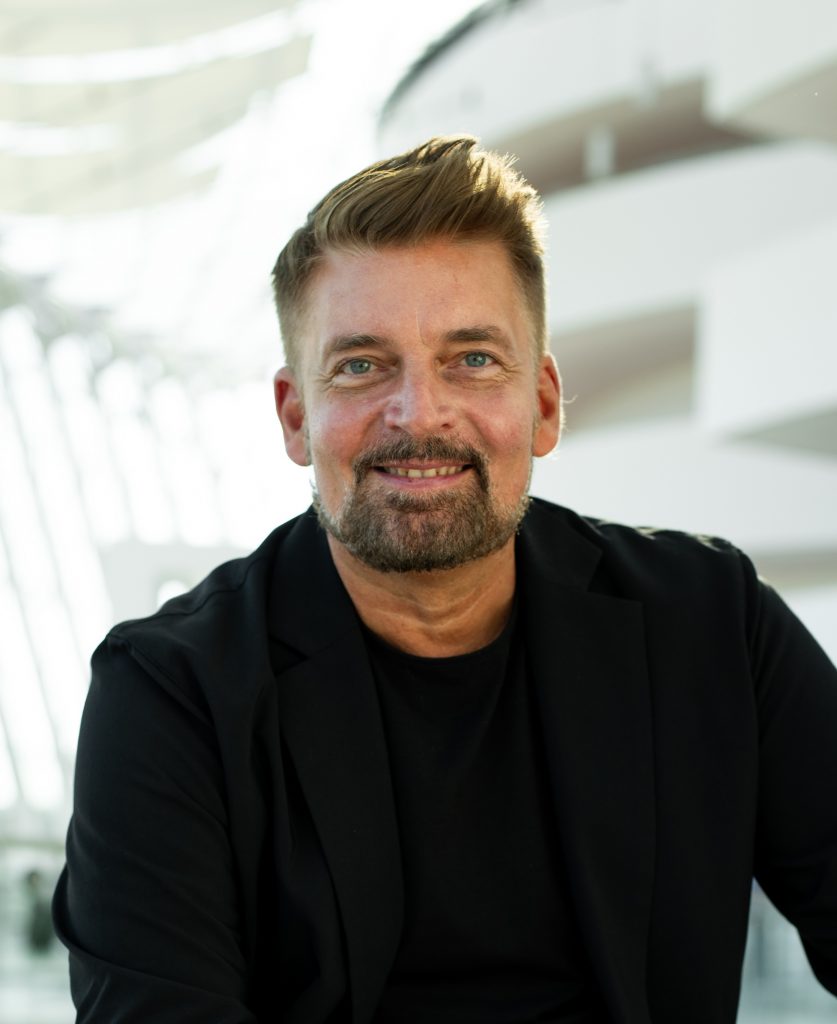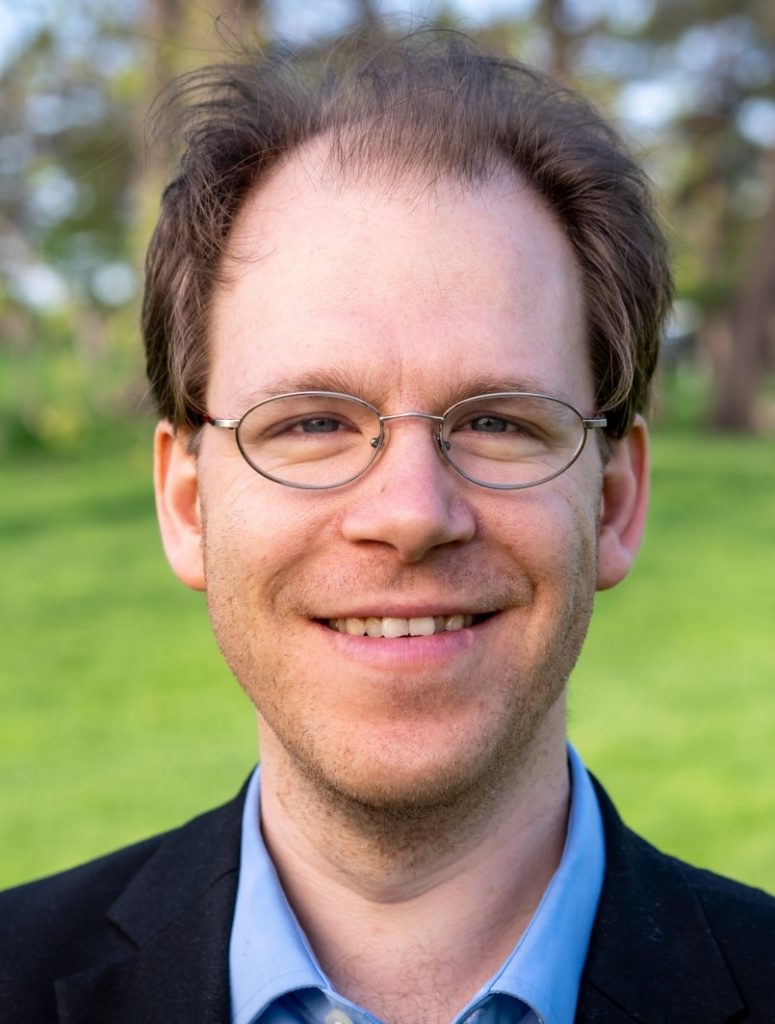NewEar Contemporary Chamber Ensemble has performed hundreds of works by national and international composers over the 32 years of its existence, while maintaining a focus on those with connections to the Kansas City region. Now the adventurous ensemble tackles both at once, as it takes on the music of a composer who is both internationally renowned and pillar of our community — albeit a newly installed one.
The group’s March concert features what is apparently the first professional performance of a work by the Kansas City Symphony’s new music director, Matthias Pintscher, who is widely respected as one of the most prominent composers of our time.
Study II for Treatise on the Veil for string trio, one of Matthias’ most striking chamber works, explores music’s interconnections with the visual arts in a manner that is as audacious as it is sonically and conceptually challenging.
It appears on a program with music by Mexican composer Gabriela Ortíz (Rios) and György Ligeti (With Pipes, Drums, and Fiddles), and piano works by Philip Glass, Augusta Read Thomas, and Marc-André Hamelin.
“Since this was Matthias’ first year here, we wanted to represent his work on the series,” said cellist Sascha Groschang, a newEar board member and veteran new-music performer. Sascha joins violinist Zsolt Eder and violist Boris Vayner for Pintscher’s demanding 13-minute string trio, which she cites as one of most meticulously detailed and annotated works she has played. “There is a performance instruction on practically every note.”
Matthias the composer is a very big deal in Europe, and he has been since the mid-1990s. He studied with a range of major composers and conductors (Giselher Klebe, Manfred Trojahn, Hans Werner Henze, Helmut Lachenmann, Peter Eötvös, and Pierre Boulez) before scoring huge successes with early chamber and orchestral works, with the opera Thomas Chatterton at the Semper-Oper Dresden (1998), and with the high-profile premiere of the Hérodiade-Fragmente by Claudio Abbado and the Berlin Philharmonic (1999).
Just as important, from 2013 to 2023 he was music director of the Paris-based Ensemble Intercontemporain, Europe’s primary new-music ensemble, which Pierre Boulez himself had founded in 1976.
During the past decade Matthias’ reputation as composer has spread rapidly throughout the New World. His works have gained footing with major ensembles, and in 2014 he joined the composition faculty at the Juilliard School — establishing a home in New York.
“It’s only natural that Europeans have been exposed to his music first,” said newEar’s new artistic director, composer Daniel Morel, “as a conductor who has worked with groups such as Ensemble Intercontemporain and the Lucerne Festival.”
Daniel is happy to welcome Matthias’ music to Kansas City, which he believes will fit neatly into newEar’s wide-ranging purview. “The music of Ortiz, Pintscher, and Ligeti reflect just how broad that scope is stylistically,” he said. “I believe it is important to celebrate the diverse output and background of today’s composers — whether we call it classical, popular, or avant-garde. Limiting the definition of contemporary chamber music ignores so many vibrant contributions to today’s music.”
Matthias’ foothold as composer in the United States has been further cemented through artistic posts at the Los Angeles Chamber Orchestra (Artist-in-Residence, 2018-2019) and the Cincinnati Symphony (Creative Partner, since 2020).
Matthias’ music draws on a vast store of sources, especially literature. His Choc for large ensemble (1996) and Sur ‘Depart’ (1999) draw inspiration from the symbolist poet Arthur Rimbaud; Thomas Chatterton recounts the brief life of a tragic English literary figure; a twilight’s song and Lieder und Schneebilder use texts of e.e. cummings; and the monodrama Hérodiade-Fragmente uses Stéphane Mallarmé’s poetry. He has also explored religious texts in such works as Shirim and songs from Solomon’s garden.
Just as engaging are the many works inspired by visual art: Dernier espace avec introspecteur (inspired by massive sculptures by Joseph Beuys), the Figura cycle for string quartet and accordion (the late works of Alberto Giacometti), Chute d’Etoiles for two solo trumpets and orchestra (works by painter/sculptor Anselm Kiefer), and Profiles of Light (paintings by Barnett Newman).
Most pertinent to the newEar performances are the four Studies for Treatise on the Veil, a series of chamber works for various string combinations that seek to evoke, to an extent, a sonic sensation similar to that created by Cy Twombly’s singular art. (Study I is for violin and cello, Study III for solo violin, and Study IV for string quartet.)
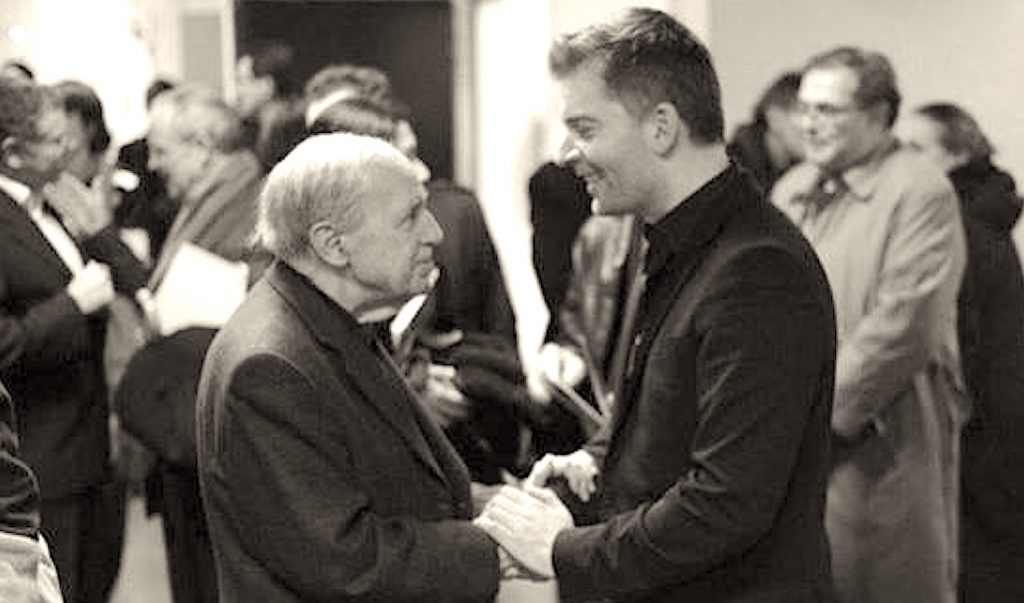
Dark and enigmatic, the painter’s 33-foot-long Treatise on the Veil (second version, 1970) consists of Twombly-esque scribbles and dramatic horizontal lines on a vast field of charcoal grey; it is accompanied by more than a dozen smaller, collage-like Studies. (The painting, which one critic called “a magnificent meditation on time and space,” itself references, in turn, Pierre Henry’s 1953 piece of musique concrète Le voile d’Orphee.)
“Cy Twombly also refers to ‘veil’ as a derivation of the Italian velo,” Matthias writes, “which is a drawing instrument developed by Leonardo da Vinci to help detect and analyze perspective. And thus my musical discourse is indicative of my attempts to draw this perspective line. … By the use of several multilayered compositional and playing techniques, I try to create exactly this illusion of crossing lines with each other.”
The composer has plenty of fun with non-conventional string techniques here, but he puts them to quite serious use. He asks each of the three players to place paper clips on strings, for example, then bow both above and below the clip.
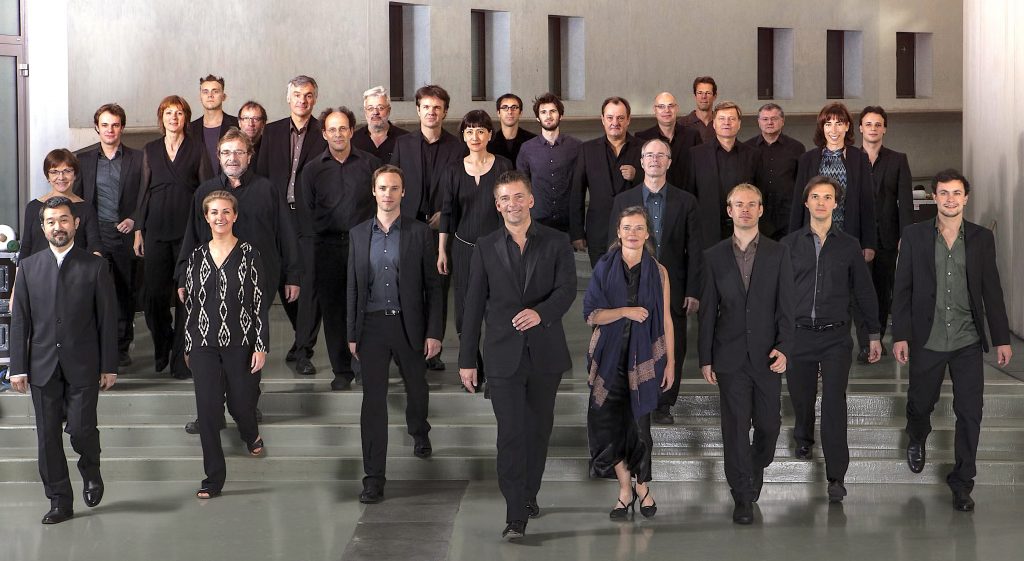
“And you’re supposed to keep more paper clips on hand for the inevitable moments when they fall off,” Sascha said with a laugh. The result is a gauntlet of whispers, breezes, harmonics, sul ponticello effects (bowing close to the bridge), and jangles caused by the paper clips.
Matthias’ exploration of sounds “can be described as a systematic quest for expressive means beyond those which are obvious,” wrote the critic Marie Luise Maintz.
There is no doubt that Matthias’ scores are challenging. They also show a composer who is as much in command of vocal and instrumental materials as anyone since the late Pierre Boulez, one of his chief mentors. His sense of orchestral textures is dazzlingly precise, and his intuitive feel for the unfolding of time (and especially the placement of silences) creates a sense of stealth and wonder.
Tiny gestures, punctuated by massive explosions of sound, both delight and confront the listener — who feels bracingly alive and engaged.
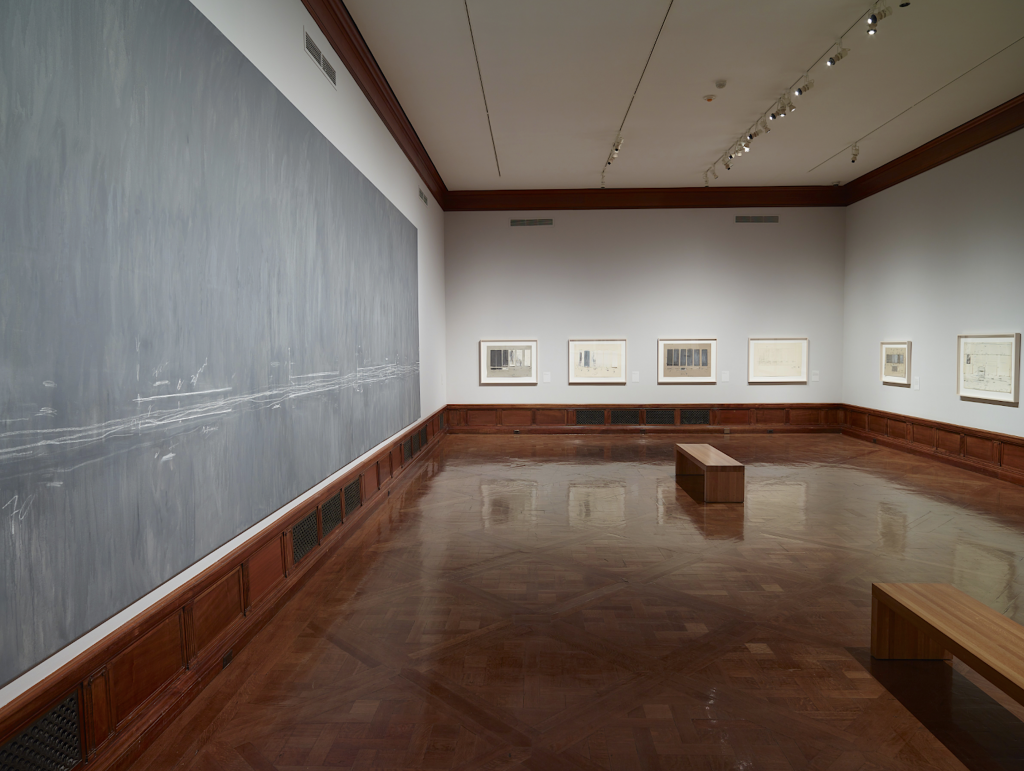
Performers can play a crucial role in fostering this engagement. “It is our job as performers to stay in the moment, to treat the music with respect and clarity no matter what,” Sascha said. “There can be an intensity in your performance if you’re staying present in the music. … The more present you stay, the more dignity you give to the music — and the more an audience can stay with you, sometimes for a long time.”
There are few rules in new music today. Dictates of the past have given way to an almost bewildering sense of freedom. “What I love about NewEar is the opportunity to deconstruct any beliefs about musical dogma and agendas,” Daniel said.
“Looking at music of the 20th century, it’s easy to fixate on the differences between Schoenberg and Strauss, or Berio and Bernstein, but the truth is that all ‘schools’ of music exist in symbiosis,” Daniel added. “I like to think the connections between seemingly disparate works are more important.”
Listeners who embark on a journey toward “knowing” Matthias are in for a gripping, at times daunting ride.
“Those who immerse themselves in his music recognize that Matthias Pintscher wants to protect his message from being instantly accessible,” writes the critic Markus Fein. “His art is therefore not of the mainstream. His music promises new experiences in out-of-the-way places.”
— By Paul Horsley
NewEar performs on March 8th and 9th at St. Mary’s Episcopal Church (note change of venue), on a program it calls Kyaenos. For tickets go to newear.org. For more information on Matthias’ works to go matthiaspintscher.com/all-compositions.
To reach Paul Horsley, performing arts editor, send an email to paul@kcindependent.com or find him on Facebook (paul.horsley.501) or Twitter/Instagram (@phorsleycritic).
Five Pieces for Listening
Available on CD, streaming services, and/or YouTube
Fünf Orchesterstücke (1997): In the grand tradition of Schoenberg and Berg, these “orchestra pieces” deliver contained pools of aggregate sounds, as passages of delicacy alternate with raucous, precisely gauged walls of dissonance.
Héroidiade-Fragmente (1999): This “dramatic scena” for soprano and orchestra paints an engaging portrait of a troubled woman who is vastly different from the person we know through Oscar Wilde’s version. (Make sure you follow the text the first time you listen.)
celestial object (2009): Watch soloist Simon Höfele in action during this work for trumpet and small ensemble (on YouTube), as he produces a wide range of alternative sonorities with accuracy and utter conviction.
Bereshit (2011-2012): “In the beginning…” Sit back and drink in this awe-inspiring 35-minute orchestral canvas, a sort of “creation story” for our time using the full range of standard and off-the-beaten-path orchestral sounds.
Mar’eh (2015): This dense, deliciously virtuosic, richly hued violin concerto makes most 20th-century works in this genre look puny by comparison.
